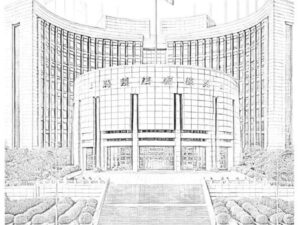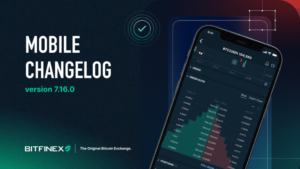New Zealand’s RBNZ cuts rate by 25 bps to 3.25% as expected

The Reserve Bank of New Zealand (RBNZ) announced on Wednesday that it cut the Official Cash Rate (OCR) by 25 basis points (bps) to 3.25% from 3.5% after concluding the May policy meeting.
The decision came in line with the market expectations.
The RBNZ lowered the policy rate for the sixth consecutive meeting.
Summary of the RBNZ Monetary Policy Statement (MPS)
Inflation within target band.
Core inflation is declining.
Spare capacity in economy.
Well placed to respond to domestic and international developments.
Both tariffs and policy uncertainties overseas to moderate recovery.
Conditions are consistent with inflation returning to the mid-point of the 1 to 3 percent target band over the medium term.
Minutes of the RBNZ interest rate meeting
Inflation is within the target band, and the committee is well placed to respond to both domestic and international developments to maintain price stability over the medium term.
The committee agreed on the projected central path for the OCR.
A 25 basis point decline in the ocr was seen as consistent with medium-term price stability.
Committee noted that the full economic effects of cuts in the OCR since august 2024 are yet to be fully realised.
In addition to the uncertain scale and duration of tariff policies, it is unclear how these will transmit to the New Zealand economy.
By a majority of 5 votes to 1, the committee agreed to decrease the OCR by 25 basis points from 3.50 percent to 3.25 percent.
Announced increase in us tariffs will lower global demand for new zealand’s exports.
RBNZ updated economic forecasts
RBNZ sees official cash rate at 3.12% in September 2025 (pvs 3.23%).
RBNZ sees official cash rate at 2.87% in June 2026 (pvs 3.1%).
RBNZ sees twi nzd at around 69.0% in June 2026 (pvs 67.5%).
RBNZ sees annual CPI 1.9% by June 2026 (pvs 2.2%).
RBNZ sees official cash rate at 3.1% in June 2028.
RBNZ sees official cash rate at 2.9% in September 2026 (pvs 3.1%).
NZD/USD reaction to the RBNZ interest rate decision
The New Zealand Dollar trims losses in an immediate reaction to the RBNZ interest rate decision. The NZD/USD pair currently trades at 0.5945, down 0.12% on the day.
New Zealand Dollar PRICE Today
The table below shows the percentage change of New Zealand Dollar (NZD) against listed major currencies today. New Zealand Dollar was the weakest against the Swiss Franc.
| USD | EUR | GBP | JPY | CAD | AUD | NZD | CHF | |
|---|---|---|---|---|---|---|---|---|
| USD | 0.14% | 0.12% | -0.01% | 0.12% | 0.26% | 0.07% | 0.04% | |
| EUR | -0.14% | 0.02% | -0.11% | -0.02% | 0.13% | -0.03% | -0.05% | |
| GBP | -0.12% | -0.02% | -0.12% | 0.00% | 0.13% | 0.28% | -0.04% | |
| JPY | 0.01% | 0.11% | 0.12% | 0.09% | 0.24% | 0.10% | 0.14% | |
| CAD | -0.12% | 0.02% | -0.01% | -0.09% | 0.15% | 0.00% | -0.05% | |
| AUD | -0.26% | -0.13% | -0.13% | -0.24% | -0.15% | 0.17% | -0.17% | |
| NZD | -0.07% | 0.03% | -0.28% | -0.10% | -0.00% | -0.17% | -0.34% | |
| CHF | -0.04% | 0.05% | 0.04% | -0.14% | 0.05% | 0.17% | 0.34% |
The heat map shows percentage changes of major currencies against each other. The base currency is picked from the left column, while the quote currency is picked from the top row. For example, if you pick the New Zealand Dollar from the left column and move along the horizontal line to the US Dollar, the percentage change displayed in the box will represent NZD (base)/USD (quote).
This section below was published on Tuesday at 21:15 GMT as a preview of the Reserve Bank of New Zealand (RBNZ) interest rate decision.
- The Reserve Bank of New Zealand is expected to trim interest rate by 25 bps to 3.25% on Wednesday.
- A rate cut in May is fully priced; RBNZ updated forecasts, acting Governor Hawkesby’s presser eyed.
- The RBNZ’s policy announcements are set to ramp up the volatility around the New Zealand Dollar.
The Reserve Bank of New Zealand (RBNZ) is widely expected to lower the Official Cash Rate (OCR) by 25 basis points (bps) to 3.25% from 3.50% after concluding its May monetary policy meeting on Wednesday. The decision will be announced at 02:00 GMT and will be followed by acting RBNZ Governor Christian Hawkesby’s press conference at 03:00 GMT.
The New Zealand Dollar (NZD) is likely to experience intense volatility on the RBNZ policy announcements and a fresh set of quarterly economic projections.
What to expect from the RBNZ interest rate decision?
With an interest rate cut fully locked in, all eyes will remain on the OCR forecasts published in the Monetary Policy Statement (MPS) for further hints on the RBNZ’s path forward on interest rates.
The February MPS suggested the OCR track at 3.1% by the first quarter of 2026.
Since then, US tariff developments and uncertainty over the global economic outlook have increased the downside risks to New Zealand’s growth prospects.
Therefore, a downward revision to the OCR track to sub-3% wouldn’t surprise markets. Markets are currently pricing in a 60% chance that the RBNZ will drop the OCR to 2.75% by the end of the year, per Herald NZ.
In the April policy statement, the central bank noted, “as the extent and effect of tariff policies become clearer, the Committee has scope to lower the OCR further as appropriate.”
“Future policy decisions will be determined by the outlook for inflationary pressure over the medium term,” the statement read.
Inflation, as measured by the Consumer Price Index (CPI), rose 2.5% YoY in the first quarter (Q1), compared with the 2.2% increase seen in Q4 2024, according to the latest data published by Statistics New Zealand on April 16. The reading beat the estimates of a 2.3% rise.
The latest RBNZ monetary conditions survey showed that New Zealand’s (NZ) two-year inflation expectations rose to 2.29% in Q2 from 2.06% in Q1.
Even though the central bank has left the door open for further rate cuts, elevated inflation levels could raise questions about the timing of the next rate cut, which could happen either in July or August.
In that light, the RBNZ could switch to the data-dependency mode amid lingering uncertainty over US tariff policies.
How will the RBNZ interest rate decision impact the New Zealand Dollar?
The NZD/USD pair hit year-to-date (YTD) highs above the 0.6000 threshold on Monday in the countdown to the RBNZ event risk. The continued US Dollar (USD) weakness due to domestic fiscal concerns and US President Donald Trump’s tariffs helps the pair stretch higher.
The Kiwi pair could witness a profit-booking decline if the RBNZ explicitly signals another rate cut in July while acknowledging downside risks to the economic outlook.
Additionally, a downgrade to the OCR track for this year and the first quarter of 2026 could be clearly read as dovish, weighing heavily on the New Zealand Dollar.
On the other hand, the NZD could see the extension of the ongoing upward trajectory if the RBNZ hints at a pause in the next meeting amid concerns over sticky inflation.
Dhwani Mehta, Asian Session Lead Analyst at FXStreet, offers a brief technical outlook for NZD/USD and explains:
“Risks appear skewed to the upside for the NZD/USD pair as the 14-day Relative Strength Index (RSI) stays well above the midline. Buyers need acceptance above the 0.6000 round level for a sustained uptrend. Further up, the October 21 high of 0.6085 will be tested en route to the 0.6150 psychological barrier.”
“If the corrective decline from 2025 highs gathers steam, the initial support is aligned at the 21-day Simple Moving Average (SMA) at 0.5931, below which the 200-day SMA at 0.5877 will be threatened. On an extended downside, the line in the sand for buyers is seen at the 50-day SMA at 0.5853,” Dhwani adds.
Central banks FAQs
Central Banks have a key mandate which is making sure that there is price stability in a country or region. Economies are constantly facing inflation or deflation when prices for certain goods and services are fluctuating. Constant rising prices for the same goods means inflation, constant lowered prices for the same goods means deflation. It is the task of the central bank to keep the demand in line by tweaking its policy rate. For the biggest central banks like the US Federal Reserve (Fed), the European Central Bank (ECB) or the Bank of England (BoE), the mandate is to keep inflation close to 2%.
A central bank has one important tool at its disposal to get inflation higher or lower, and that is by tweaking its benchmark policy rate, commonly known as interest rate. On pre-communicated moments, the central bank will issue a statement with its policy rate and provide additional reasoning on why it is either remaining or changing (cutting or hiking) it. Local banks will adjust their savings and lending rates accordingly, which in turn will make it either harder or easier for people to earn on their savings or for companies to take out loans and make investments in their businesses. When the central bank hikes interest rates substantially, this is called monetary tightening. When it is cutting its benchmark rate, it is called monetary easing.
A central bank is often politically independent. Members of the central bank policy board are passing through a series of panels and hearings before being appointed to a policy board seat. Each member in that board often has a certain conviction on how the central bank should control inflation and the subsequent monetary policy. Members that want a very loose monetary policy, with low rates and cheap lending, to boost the economy substantially while being content to see inflation slightly above 2%, are called ‘doves’. Members that rather want to see higher rates to reward savings and want to keep a lit on inflation at all time are called ‘hawks’ and will not rest until inflation is at or just below 2%.
Normally, there is a chairman or president who leads each meeting, needs to create a consensus between the hawks or doves and has his or her final say when it would come down to a vote split to avoid a 50-50 tie on whether the current policy should be adjusted. The chairman will deliver speeches which often can be followed live, where the current monetary stance and outlook is being communicated. A central bank will try to push forward its monetary policy without triggering violent swings in rates, equities, or its currency. All members of the central bank will channel their stance toward the markets in advance of a policy meeting event. A few days before a policy meeting takes place until the new policy has been communicated, members are forbidden to talk publicly. This is called the blackout period.




